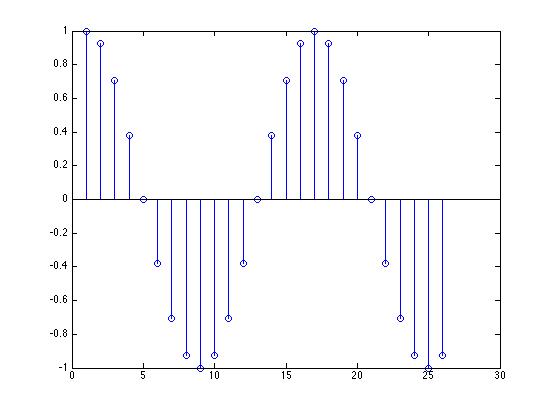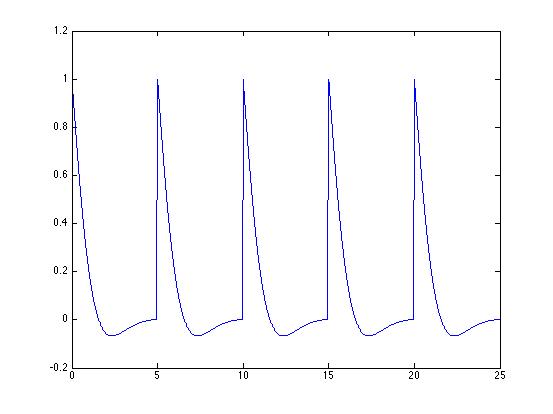Part 1
Changing a Periodic Continuous Time Signal to a Non-Periodic Discrete Time Signal
The signal I chose for this part can be found here.
When the periodic Continuous Time signal $ cos(t) $ is placed into Discrete Time, it is no longer periodic (as seen below).
File:Cos(t) ezarowny ECE301Fall2008mboutin.jpg
Changing a Periodic Continuous Time Signal to a Periodic Discrete Time Signal
In order to make $ cos(t) $ a periodic signal in Discrete Time, we would have to use a different sampling frequency than above. Using $ \frac{\pi}{8} $ we obtain the following periodic signal:
Part 2
The signal I chose for this part can be found here
The function $ e^{-t}(cos(t) + jsin(t)) $ can be made periodic by literally repeating the signal in MATLAB. The result of this would look like the following signal:



